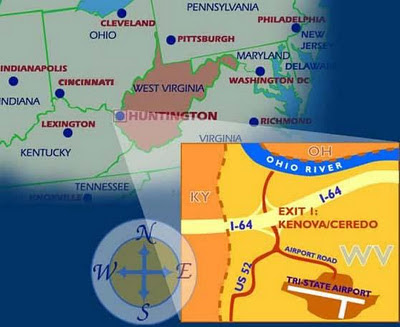Forty-something years after the fact, there is still no definitive conclusion regarding the exact cause of the Marshall airplane crash on November 14, 1970.
According to the final report filed by the National Transportation Safety Board, the two most likely explanations for the accident were:
- Improper use of cockpit instrumentation data, or ;
- Altimetry system error.
In layman’s terms, it was either the instruments that malfunctioned; or it was a case in which the pilot and first officer misinterpreted the data provided by the instruments.

The site of the crash, Tri-State Airport, is only minutes away from downtown Huntington, West Virginia. Like most airports in West Virginia, Tri-State sits on top of a mountain.
Mason Linker Jr., a retired commercial airlines pilot, has a familiarity with Tri-State Airport that others don’t. Linker, a pilot with Piedmont Airlines for thirty years, conservatively estimates that he flew in and out of Tri-State at least fifty times during his career.
For three decades, Linker flew in and out of airports as far north as Boston and as far south as Florida. He noted that terrain is one of the factors that pilots must consider as they prepare to bring a plane in for a landing. “Some days it was a snap, on other days it wasn’t,” said Linker, referring to landing a plane at Tri-State. “I experienced more wind turbulence in landing planes in West Virginia. A 15 knots wind in Florida seemed to create less turbulence than 15 knots at a West Virginia airport, and it’s probably due to terrain.”
Weather conditions on the night of the crash were far from ideal for landing a jet plane on a relatively short runway. The presence of rain and fog, however, weren’t nearly as critical as the absence of a glide slope at Tri-State Airport.
A glide slope transmits a signal to the aircraft to help the pilot make sure that the plane descends at the right angle. Due to budget constraints and the absence of large portions of level land, Tri-State Airport did not have a glide slope as part of its Instrument Landing System. With no glide slope, the landing was considered a “non-precision instrument approach.” The airport was allowed to operate without a glide slope, but without it, pilots had one less tool for landing safely.
“It’s an aid that we really needed,” said Linker. “Landing a plane without the use of a glide slope is very challenging, regardless of whether the airport sits on a mountain or whether it’s at sea level. When you add adverse weather conditions to the mix, the degree of difficulty is even greater. It’s a lot more challenging.”
No one knows exactly what happened with the Southern Airways DC-9 jet and why it flew at such a low altitude at the time it started its approach to the runway. As the plane made its descent, it hit some trees on a mountain ridge before crashing nose-first into the side of the mountain. There was an explosion on impact.
Eye-witnesses who were interviewed for the documentary Ashes to Glory, remembered how odd it looked for such a huge plane to be flying so low to the ground. As they stood at ground level, these witnesses said they could actually see the windows on the plane.
Given Linker’s expertise as a pilot and his knowledge about flying in and out of Tri-State, you’d think that he wouldn’t mind offering an opinion on what might have happened that night.
“It’s been my experience that when I give an opinion, it turns out that I’m wrong a lot of the time,” he said. “That’s why I decline to speculate.”
 It’s always been my belief that the memoir November Ever After has unlimited appeal. Yes, the story of the 1970 Marshall University football plane crash has special meaning to anyone with a connection to the school and/or the state of West Virginia.
It’s always been my belief that the memoir November Ever After has unlimited appeal. Yes, the story of the 1970 Marshall University football plane crash has special meaning to anyone with a connection to the school and/or the state of West Virginia. 












